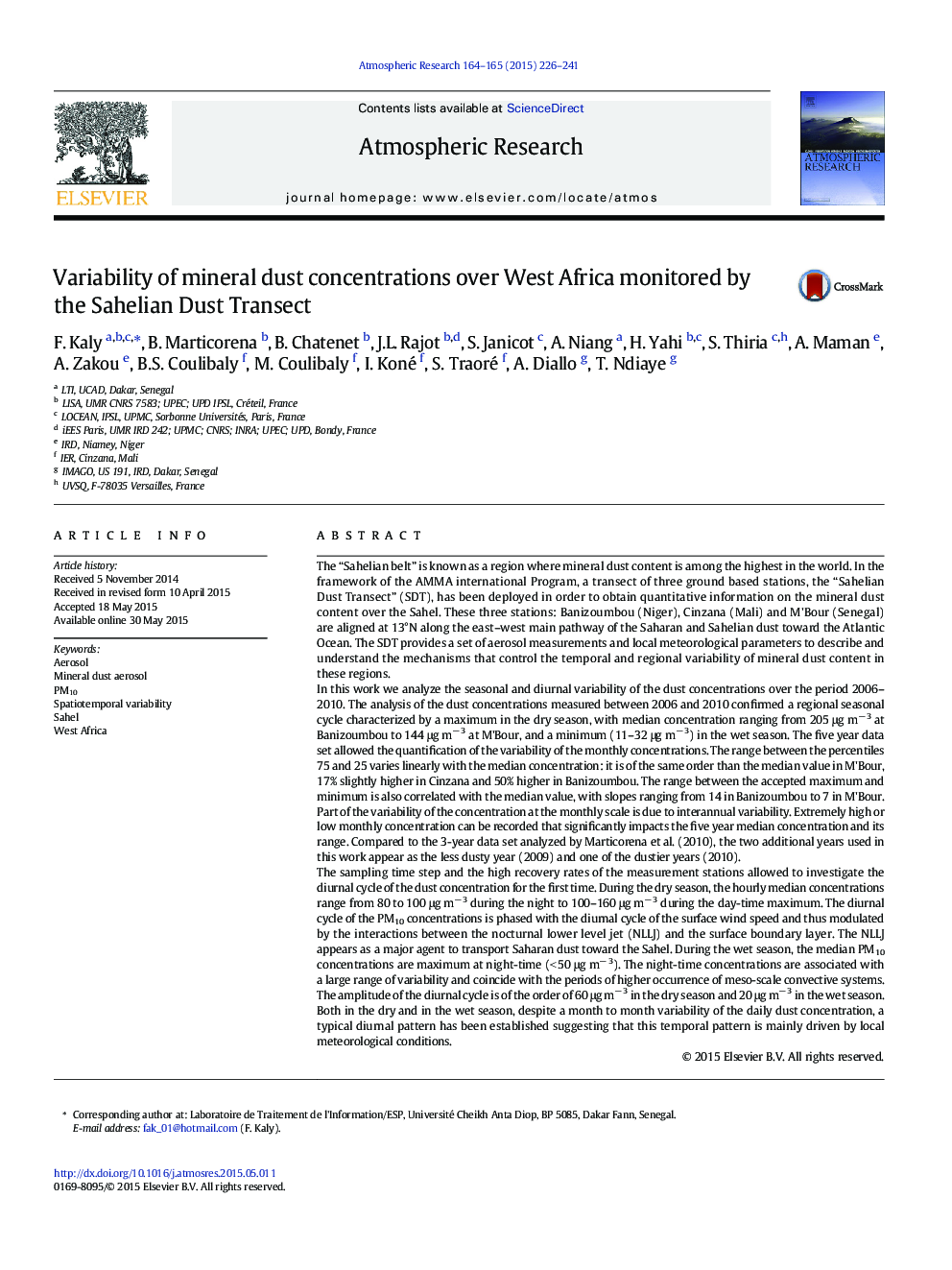| Article ID | Journal | Published Year | Pages | File Type |
|---|---|---|---|---|
| 6343222 | Atmospheric Research | 2015 | 16 Pages |
Abstract
The sampling time step and the high recovery rates of the measurement stations allowed to investigate the diurnal cycle of the dust concentration for the first time. During the dry season, the hourly median concentrations range from 80 to 100 μg mâ 3 during the night to 100-160 μg mâ 3 during the day-time maximum. The diurnal cycle of the PM10 concentrations is phased with the diurnal cycle of the surface wind speed and thus modulated by the interactions between the nocturnal lower level jet (NLLJ) and the surface boundary layer. The NLLJ appears as a major agent to transport Saharan dust toward the Sahel. During the wet season, the median PM10 concentrations are maximum at night-time (< 50 μg mâ 3). The night-time concentrations are associated with a large range of variability and coincide with the periods of higher occurrence of meso-scale convective systems. The amplitude of the diurnal cycle is of the order of 60 μg mâ 3 in the dry season and 20 μg mâ 3 in the wet season. Both in the dry and in the wet season, despite a month to month variability of the daily dust concentration, a typical diurnal pattern has been established suggesting that this temporal pattern is mainly driven by local meteorological conditions.
Related Topics
Physical Sciences and Engineering
Earth and Planetary Sciences
Atmospheric Science
Authors
F. Kaly, B. Marticorena, B. Chatenet, J.L. Rajot, S. Janicot, A. Niang, H. Yahi, S. Thiria, A. Maman, A. Zakou, B.S. Coulibaly, M. Coulibaly, I. Koné, S. Traoré, A. Diallo, T. Ndiaye,
